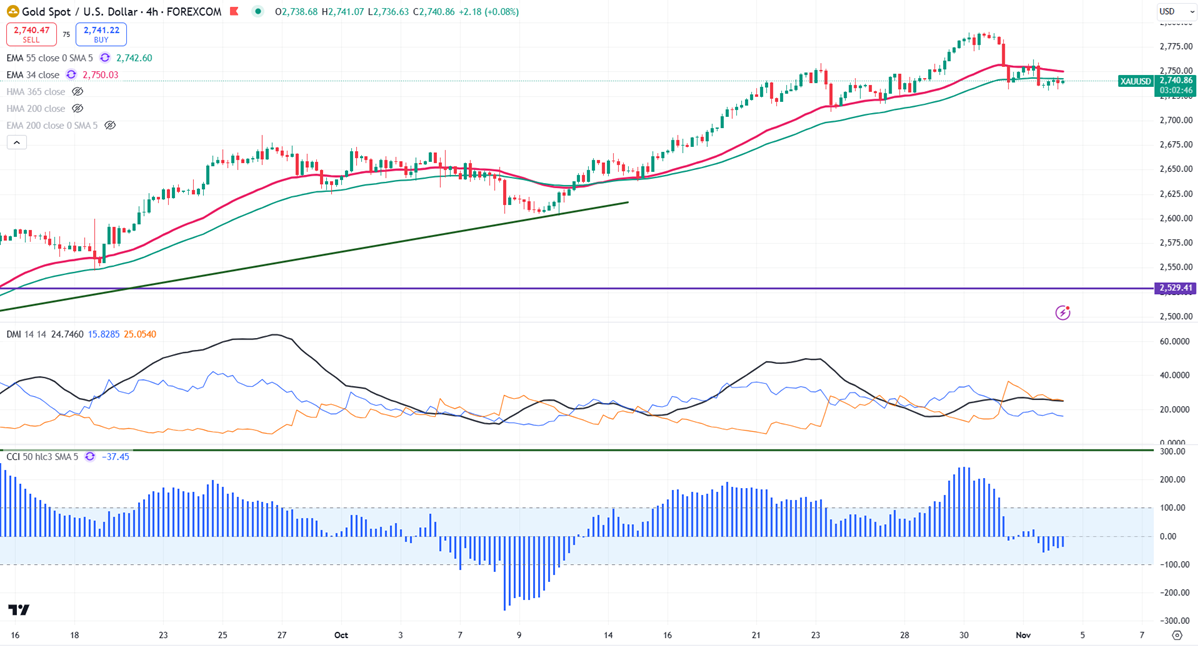Gold trades with no direction ahead of US elections and Fed monetary policy. It hits a low of $2731 yesterday and now sitting around $2740.
In October 2024, the U.S. added only 12,000 jobs, the lowest growth since 2020, after a gain of 254,000 in September. The unemployment rate stayed at 4.1%, while average hourly pay increased by 4.0% compared to last year, with slow job growth attributed to bad weather and strikes at Boeing.
As of November 3, 2024, the U.S. presidential election between Kamala Harris and Donald Trump is just days away, with strong early voter turnout exceeding 75 million. Gold prices reached a record high of $2,771 per ounce in late October, and analysts believe a Trump victory could push prices even higher due to concerns about inflation from his proposed tariffs. This could lead more people to buy gold as a safe investment amid economic uncertainty.
According to CME Fed watch tool, probability of 25 bpbs rate cut increased to 98.3% from 95.8% a week ago.
Technical Overview:
Gold remains below both short-term and long-term moving averages on the 4-hour chart. The immediate support level is around $2,730; a fall below this could lead to targets of $2720/$2700/$2,685, $2,670, $2,660, or even $2,638. A bearish trend would only be confirmed if prices drop below $2,470. On the upper side, minor resistance is found at $2,745 and breaking past this barrier could push prices up to $2,762/$2775/$2790.
Current market indicators present mixed signals: the Commodity Channel Index (CCI) indicates a bearish trend, while the Average Directional Movement Index (ADX) suggests a neutral outlook.
Trading Strategy:
Consider making purchases on dips around the 2,700 mark, with a stop-loss positioned around 2,670 and a target price of $2,759.



 Fed Near Neutral Signals Caution Ahead, Shifting Focus to Fixed Income in 2026
Fed Near Neutral Signals Caution Ahead, Shifting Focus to Fixed Income in 2026  Robinhood Expands Sports Event Contracts With Player Performance Wagers
Robinhood Expands Sports Event Contracts With Player Performance Wagers 





























